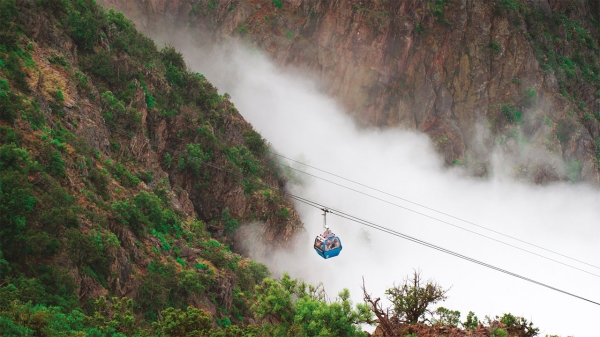
Aseer National Park is a national park located in as-Sudah Center in Aseer province, Kingdom of Saudi Arabia. It spans an area of approximately 4,500 km². It was established with the goal of utilizing its green spaces to rehabilitate wildlife in the province, including rare plants, endangered species, birds, and animals. The construction cost of the park amounted to about SAR58 million.
Preparation of studies and designs for the park began in 1976, and it opened its doors to visitors in 1980. The number of wildlife species in the park is three hundred species, according to the latest statistics available as of 2021.
According to the definition of the International Union for Conservation of Nature (IUCN), a national park is a natural area designated by law to preserve unique ecosystems and species of plants, animals, and birds. It also serves as a tourist destination, where various parks, facilities, and public services are established to accommodate visitors.
The initial initiatives for Aseer National Park
The work began in the early years following the opening of Aseer National Park with a focus on agriculture, particularly certain plant species like the juniper plant, which found a suitable environment in the park after years of experiencing apical or total death phenomena. The park's area is distributed among valleys, mountains, and plains where juniper thrives. The juniper tree is dioecious, and due to its possession of both male and female cones, the female fronds of the tree are distributed below the mountains and between the valleys, while its male cones grow on the mountain tops. In addition to those in charge of the park providing specialized care for certain plants, removing damaged ones, and disposing of them scientifically, they also fenced off juniper trees.
The park underwent a complete rehabilitation process, as park management decided to close its gates from the end of the summer of 2006 until the beginning of the summer of 2007, to give the rehabilitation process ample time. Additionally, car driving on the park's secondary roads was prohibited during its rehabilitation periods to protect the distributed plants from damage, trampling, or boundary removal.
The content of Aseer National Park
Aseer National Park encompasses a diverse ecological habitat with diverse forms of wildlife. These are distributed across its extended areas, including locations such as Delgan and al-Fura'a, which is located four km away from Dalagan, where juniper trees are densely populated. The park also includes as-Sudah Park, which is the highest area within Aseer National Park. Additionally, the park contains al-Hadabah region, where predatory birds are abundant. Located two km from the center of Abha city, the Visitor Center serves as the starting point for Aseer National Park.
Aseer National Park sites
Inside Aseer National Park lies Prince Sultan Park, which is the latest developed site. It covers an area of approximately 2.68 km² and is characterized by juniper trees, dense acacia, along with several shrubs. Another park within Aseer National Park is called Dalagan, situated about four km away from Prince Sultan Park.
Aseer National Park has pathways for walking amidst its misty valleys, offering views of villages with gradually sloping green farms, which makes them suitable places for hiking and various sports such as camping and climbing. The endangered Arabian leopards still live in the high hills despite their rarity. Additionally, birds and eagles can be seen soaring amidst the fog and towering peaks.
Related quizzes
Related articles


